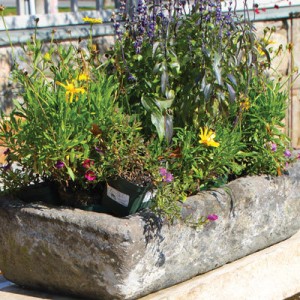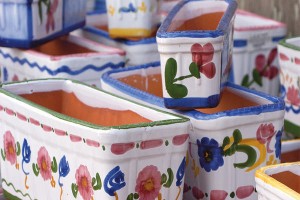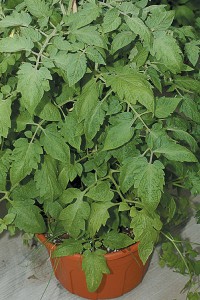If you don’t have a lot of space for a garden, or if you have poor soil or limited sunlight on your property, consider planting your garden in containers this year.
Benefits
According to Ohio State University Extension, container gardening is much like traditional gardening. Seeds and transplants are planted just like they would be in a normal garden. Container gardens can be moved, so plants can be placed in areas where they’ll grow best. Pests can be managed much more easily than with traditional gardens, too.
Unlike normal gardens, container gardens must be watered frequently. Containers may limit the size of your garden’s harvest, but overall, container gardening is a viable option for gardeners who want to try something new.
Getting started
To get started with container gardening, you’ll need to choose the types of containers to use. Old window boxes, plastic hanging baskets or even an old bathtub can serve as a container for growing.
There isn’t a limit to the design of containers. Both porous or non-porous containers can be used for container gardening.
Porous containers allow for water to be drained. Clay is a porous container, while wood and pressed fiber pots are semi-porous.
Non-porous containers must have holes drilled in them to create drainage. Plastic, metal, glass and glazed pots are considered non-porous.
When it comes to size, choose containers that are larger than the plants you’re growing. Roots need to have room to grow, and plants will stop growing if too small of a container is used. In smaller containers, water and nutrients are used up more quickly.
Large containers are typically placed on the ground, while small containers can be placed in raised positions. “Pot feet” made out of clay are commonly used to help pots drain and rolling platforms can be installed to move large pots around.
Best vegetables for containers
Some vegetables naturally grow better in containers than others. These varieties typically grow well in containers:
- Salad greens
- Spinach
- Eggplant
- Swiss chard
- Beets
- Radish
- Carrots
- Peppers
- Bush beans
- Determinate tomatoes (variety that grows to a certain height)
- Summer squash (bush variety)
- Cucumbers (bush variety)
- Green onions
- Herbs
Maintenance
Plants grown in containers require specific maintenance, including soil, watering, fertilizer and support.
Soil. A soilless mix made up of peat moss, vermiculite and other course wood or sand products can be used for container gardening. Soil mixes, which tend to hold water better than soilless mixes, typically consist of one part sphagnum peat moss or compost, one part pasteurized soil, one part vermiculite or perlite and some composted cow manure, can be used.
To retain soil, place landscape cloth or screen in the bottom of the pots before planting.
Water. Container gardens must be watered frequently due to increased exposure to sun and wind. Hydrogels (water holding gels) can be placed in the soil mix before it’s placed in the container, but plants will still need to be watered once or twice each day so that roots don’t dry out.
To avoid over-watering, insert a Popsicle stick into the soil. If, when removed, the Popsicle stick has soil stuck to it, the container doesn’t need watered.
Fertilize. Use timed-release fertilizer at planting. OSU Extension recommends a balanced fertilizer like 10-10-10, 13-13-13 or 14-14-14
Apply a water soluble fertilizer mid-season when plants have begun to produce. Peters 20-20-20 or Miracle Gro 15-30-15 are two water soluble options, according to OSU Extension.
Support. Plants may still need support when they’re grown in containers, especially tomatoes, peppers and cucumbers. Cone or pyramid-shaped trellises, caging and stalking can all be implemented in containers.
For more information, see OSU Extension’s Container Vegetable Gardening Factsheet or OSU Extension’s Gardening in Containers Factsheet.














